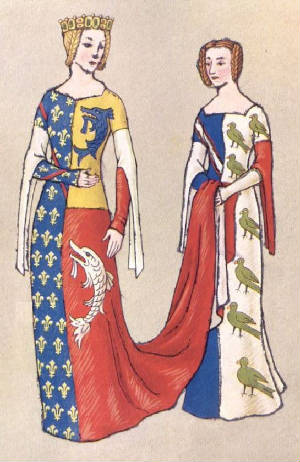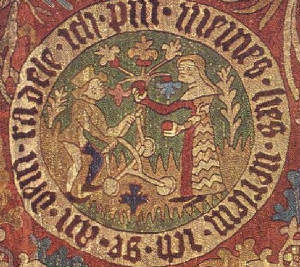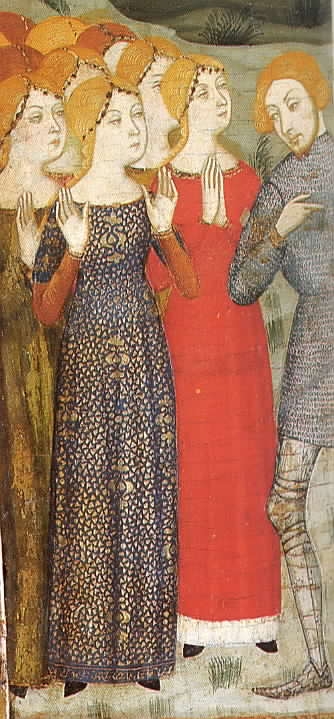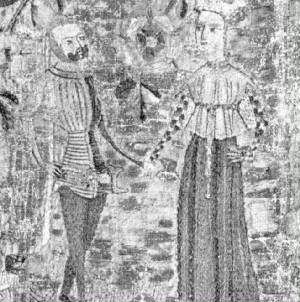|
"The Cotehardie is a piece
of clothing worn primarily in Western Europe beginning in the early to mid-fourteenth century. It was worn by both men and women, and is characterized by full length tight sleeves,
often buttoned or laced down the forearm. The body of the garment was fitted
to the wearer, sometimes tightly and sometimes not, and sutured down the back, buttoned down the front, or in some cases laced
down the side. There appeared to be no undergarment shaping (such as a corset)
as is evidenced by pictoral samples of the day. In fact, any shape that was given
to the form appeared to be through the tight suture or sewing of the wearer into the garment.
Hence, clothing was skin tight in some cases"
http://www.geocities.com/ariedin/What.html
"The cotehardie was the other upper garment for women of the fourteenth century. It was understood
as a dress with sleeves, although the length and width of these could vary. The cotehardie (coathardie) was not as closely associated with courtly-aristocratic costume
as the surcot ouvert, but was considered as an outdoor garment. In 1347 a certain Jeanne de Presles bequeathed a black cotehardie
trimmed with miniver to her maid. Among the many varieties of this garment some can be decorated with buttons in front, and
to its sleeves the characteristic coudieres or tippets could be added: the hanging, opened and lengthened parts of the cuff,
which might also be trimmed with fur. Two edged pocket slides can be observed as well in some cases. In Hungary, the wallpaintings of Szentmihályfa
show a red cotehardie with hanging coudičres trimmed with fur, worn over a red cotte with close-fitting long sleeves."
http://www.ceu.hu/medstud/manual/SRM/female.htm
| Heraldic Costume, Late 14th Century |

|
| (Houston, Plate IV) |
The picture above and below show examples of Heraldic dress. It was fashionable in this period to wear your heraldy on
your dress. (Personally I find it ugly...blech...)
| Tapestry showing lovers, Bavaria, c. 1370-1380 |

|
| (Schuette p. 144) |
|
 |
|
Cotehardie

| Embroidered picture, detail. Bohemia, c. 1370 |

|
| (Schuette p. 145) |
What I find interesting about these two pictures is that they show the woman wearing two pieces, instead
of the one-piece cotehardie.
| Embroidered picture, detail. Bohemia, c. 1370 |

|
| (Schuette p. 145) |
|
|

